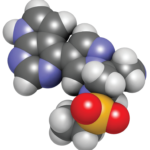Based on results from the Oral Rheumatoid Arthritis Trial (ORAL) Surveillance study, the U.S. Food & Drug Administration (FDA) recently added a black box warning on all currently approved Janus kinase (JAK) inhibitors. The optimal treatment strategy for the use of JAK inhibitors for rheumatoid arthritis (RA) and other indications remains unclear, and long-term safety results will take years to emerge. Therefore, patients and clinicians are left to determine the best approach to balance the benefits and risks of JAK inhibitors compared with other treatments (e.g., tumor necrosis factor [TNF] inhibitors).
In this study, Janak et al. set out to determine the prevalence of baseline risk factors for cardiovascular outcomes and cancer among commercially insured patients with RA during their first dispensed treatment with either TNF or JAK inhibitors.
Methods
Patients with RA from Aug. 16, 2019, to March 31, 2022, were identified in the Merative MarketScan Commercial and Medicare databases. The first date that a TNF or JAK inhibitor was dispensed was the index date, and baseline risk factors were assessed among patients continuously eligible for 12 months before the index date. Patients who had the following were stratified into an elevated risk category: 65 years or older, smoking, a history of a major adverse cardiovascular event, venous thromboembolism or cancer. The prevalence of modifiable risk factors was also reported: hypertension, hyperlipidemia, obesity and diabetes. The crude prevalence and prevalence difference (PD) were reported.
Results
A total of 12,673 patients (TNF inhibitor [n=7,748; 61%] and JAK inhibitor [n=4,925; 39%]) met inclusion criteria. The prevalence of elevated risk was the same for all patients using a TNF inhibitor (n=2,051; 26%) and a JAK inhibitor (n=1,262; 26%). Compared with patients having low risk, patients with an elevated risk also had a higher prevalence of at least one primary modifiable risk factor for both patients using JAKi (79% vs. 58%; PD 21%, 95% confidence interval [CI] 18%–24%) and TNFi (81% vs. 60%; PD 21%, 95% CI 19%–23%).
Conclusion
In recent years, TNF inhibitors and JAK inhibitors were used in similar proportions to treat RA among commercially insured patients at elevated cardiovascular and cancer risk. Because uncontrolled disease, modifiable comorbidities and treatment with JAK inhibitors are associated with these adverse events, future studies evaluating how practice patterns may be affected by the emergence of safety data will be of value.
For complete details, including source material, refer to the full study.


